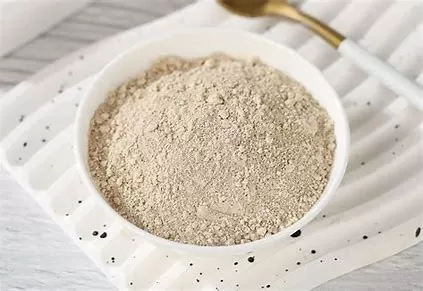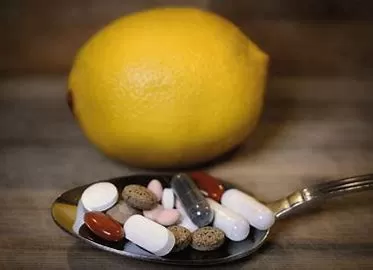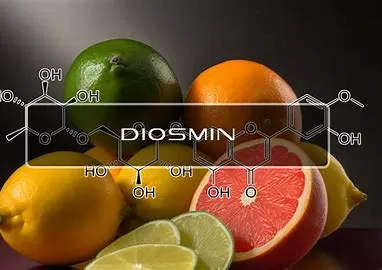- 0086-571-85302990
- sales@greenskybio.com
Diosmin, Hesperidin, and Daflon: A Comprehensive Insight into Their Usage and Benefits
2025-04-07

In the world of natural health supplements and pharmaceuticals, certain compounds stand out due to their unique benefits and extensive research backing their efficacy. Among these are Diosmin and Hesperidin, two flavonoids derived from citrus fruits that, when combined, form the active ingredients in Daflon—a well-known medication. This article provides an in-depth look into what Diosmin, Hesperidin, and Daflon are, their mechanisms of action, potential benefits, and applications in modern medicine.
Understanding Diosmin and Hesperidin
Diosmin and hesperidin are flavonoids, a class of powerful antioxidants found in various plants. These compounds are traditionally extracted from the peels of citrus fruits such as oranges and lemons, where they contribute to the plant's defense mechanisms.
1. Diosmin: Diosmin is primarily found in the citrus family and is a derivative of hesperidin. It is widely recognized for its vascular-protective properties, playing a vital role in improving venous tone, reducing inflammation, and enhancing lymphatic drainage. It has been used in traditional medicine for decades to treat various circulatory issues, particularly chronic venous insufficiency.
2. Hesperidin: Like diosmin, hesperidin is abundant in citrus fruits and is famed for its antioxidant and anti-inflammatory properties. It works effectively alongside diosmin, contributing to improved capillary permeability, reduced blood pooling in the veins, and overall cardiovascular health support.

Daflon: The Synergistic Combination
While diosmin and hesperidin are beneficial individually, their combination is what sets Daflon apart as a potent treatment option. Daflon is a pharmaceutical preparation that includes a standardized mixture—usually 90% diosmin and 10% hesperidin. This formulation is specifically optimized to harness the synergistic effects of these flavonoids, maximizing their therapeutic potential.

The Mechanism of Action
The combination of diosmin and hesperidin in Daflon works on several fronts to support vascular health:
1. Venotonic Effect: Diosmin improves the tone of veins by reducing venous capacitance and distensibility (the ability to stretch and hold a volume). This action helps maintain normal blood flow and reduces the risk of varicose veins.
2. Anti-inflammatory Properties: Both hesperidin and diosmin possess significant anti-inflammatory effects that inhibit the release of inflammatory mediators. This helps in managing the inflammatory component of chronic venous disorders.
3. Microcirculation Improvement: The compounds enhance overall microcirculation by strengthening capillaries, decreasing permeability, and preventing leakage. This results in reduced edemas and heaviness in the legs.
4. Antioxidant Activity: By scavenging harmful free radicals, hesperidin and diosmin protect vascular tissues from oxidative stress, which can otherwise lead to vascular damage.

Applications and Benefits
Daflon and its primary components are extensively used in various medical contexts, notably for the treatment of venous insufficiencies and related conditions.
1. Chronic Venous Insufficiency (CVI): One of the most common uses of Daflon is in managing symptoms of CVI—a condition where veins fail to efficiently return blood from the legs to the heart. Symptoms such as leg swelling, pain, heaviness, and, in severe cases, skin changes and ulceration, are alleviated through the regular use of Daflon.
2. Hemorrhoidal Disease: Acute and chronic hemorrhoids, which involve swollen and inflamed veins in the rectum and anus, benefit significantly from treatment with this medication. The anti-inflammatory and venotonic properties of Diosmin and Hesperidin help reduce hemorrhoidal symptoms and improve overall quality of life for sufferers.
3. Varicose Veins: While cosmetic to some extent, varicose veins can cause discomfort and lead to more severe complications. Daflon is often prescribed to manage symptoms of varicose veins and improve overall venous health.
4. Lymphedema: Certain studies suggest that Daflon may offer benefits in managing lymphedema—a condition characterized by swelling due to lymph fluid buildup, although more research is needed in this area.

Clinical Studies and Efficacy
Daflon has undergone rigorous clinical testing, with numerous studies highlighting its efficacy in improving vascular health. A considerable body of evidence supports its use in the management of venous disorders, demonstrating significant improvements in symptomatology and quality of life indices for patients suffering from CVI.
Additionally, randomized controlled trials have confirmed Daflon's role in reducing the recurrence and severity of hemorrhoidal attacks, indicating a marked improvement compared to placebo groups. These studies contribute to its standing as a well-accepted treatment option among healthcare practitioners worldwide.
Conclusion
Diosmin, hesperidin, and their proprietary combination in Daflon represent a valuable tool in the management of venous and vascular disorders. Their natural origin, combined with substantial clinical support and a robust safety profile, makes them an attractive option for individuals seeking relief from chronic venous insufficiency, hemorrhoidal disease, and related conditions. As our collective understanding of vascular health advances, diosmin and hesperidin will undoubtedly continue to play a crucial role in both preventative and therapeutic strategies aimed at improving circulatory wellness. With ongoing research, the scope of their application may yet expand, offering hope and relief to even more patients worldwide.
- ▶ Hesperidin
- ▶ citrus bioflavonoids
- ▶ plant extract
- ▶ lycopene
- ▶ Diosmin
- ▶ Grape seed extract
- ▶ Sea buckthorn Juice Powder
- ▶ Beetroot powder
- ▶ Hops Extract
- ▶ Artichoke Extract
- ▶ Reishi mushroom extract
- ▶ Astaxanthin
- ▶ Green Tea Extract
- ▶ Curcumin Extract
- ▶ Horse Chestnut Extract
- ▶ Other Problems
- ▶ Boswellia Serrata Extract
- ▶ Resveratrol Extract
- ▶ Marigold Extract
- ▶ Grape Leaf Extract
- ▶ blog3
- ▶ blog4
- ▶ blog5
-
what is diosmin hesperidin daflon
2025-04-07
-
what is the mechanism of action of diosmin
2025-04-07
-
what is micronized diosmin
2025-04-07
-
what are the contraindications for diosmin
2025-04-07
-
Hesperidin
2025-04-07
-
Senna Leaf Extract
2025-04-07
-
Alfalfa Meal
2025-04-07
-
Hericium erinaceus extract powder
2025-04-07
-
Agaricus Blazei Extract
2025-04-07
-
Yohimbine Bark Extract
2025-04-07
-
Mulberry Extract
2025-04-07
-
Dan Shen Root Extract/Salvia Root Extract
2025-04-07
-
Shikonin
2025-04-07
-
Cactus Extract
2025-04-07




























